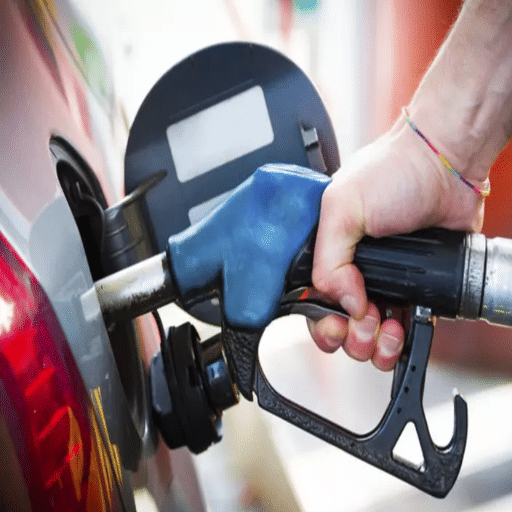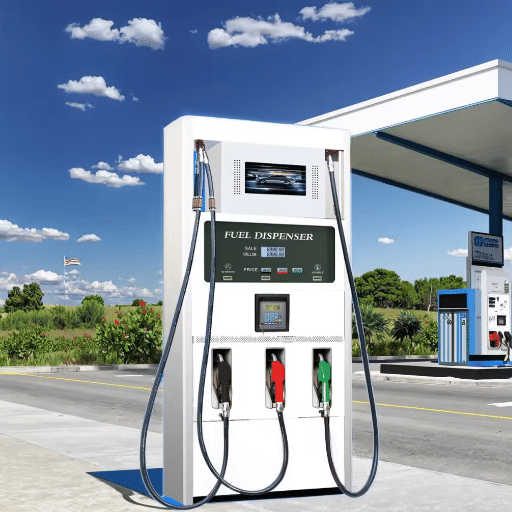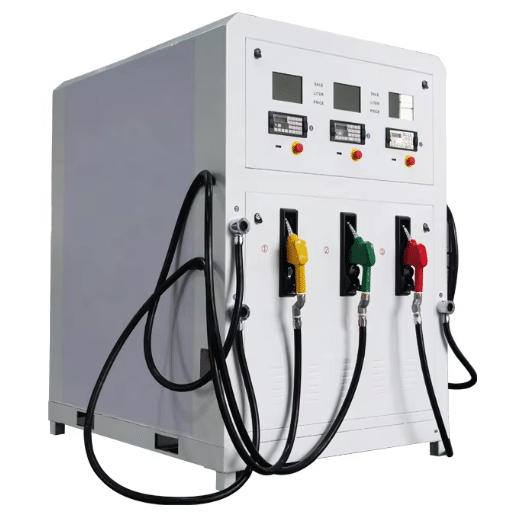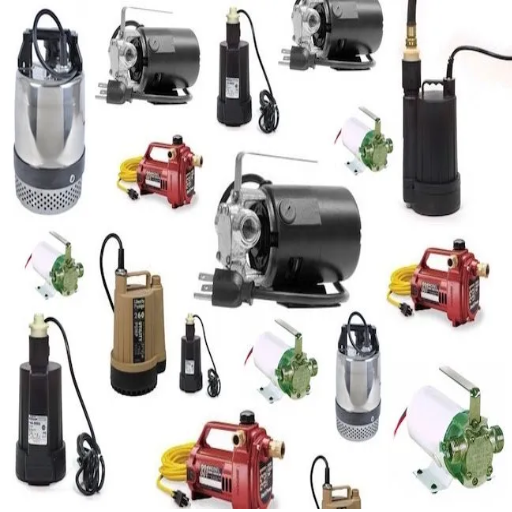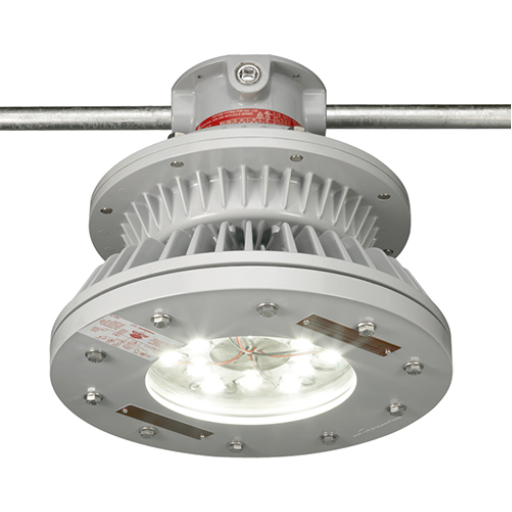Many drivers tend to overlook the fact that water contamination in a gas tank occurs quite often, and it also poses a big issue. The engine performance, fuel efficiency, and, in extreme cases, even the engine itself could incur costly repairs if the water is not removed. Early detection of the symptoms and application of the right treatment can save you time, money, and the annoyance of dealing with a car that is not performing as it should. This guide gives comprehensive coverage of the signs of water in your gas tank, the reasons for it, and also the most effective methods to get rid of it. You might be experiencing rough idling, stalling, or peculiar engine behavior; nonetheless, this article will empower you with the right information to safeguard your car and keep it running at its best.
Understanding Water in a Gas Tank
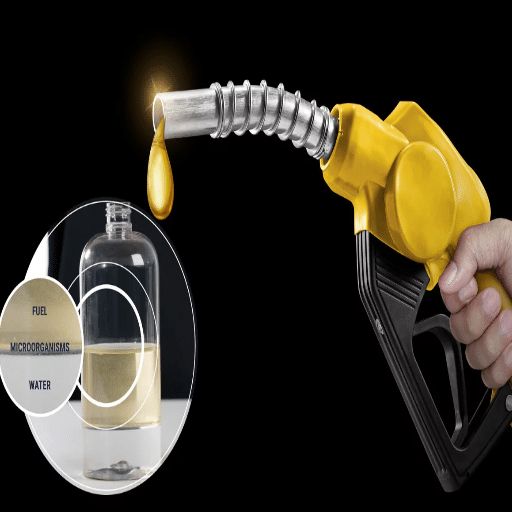
The presence of water in a gas tank can lead to a lot of trouble regarding the performance of your vehicle. It mainly enters the tank through condensation, a defective gas cap, or poor-quality fuel. The first signs of this issue are often rough idling, less mileage, engine misfiring, or even starting trouble. The reason for these problems is that water interferes with the fuel-burning process. So, spotting and resolving the problem quickly is crucial; the use of a fuel additive made for water removal or the draining of the tank are some of the effective methods that help in stopping engine damage from happening further.
What Causes Water to Get in Your Gas Tank?
There are a variety of ways through which water may gain entry into your gas tank, along each of them affects engine functionality negatively if not fixed. Among the suggested causes, one is condensation, which is when the temperature changes result in moisture accumulating inside the fuel tank, particularly if the tank is not full. Additionally, water coming from rain or car washing can get into the fuel tank if the gas cap is faulty or not sealed properly. Contaminated fuel from gas stations is another possible source, as it may inadvertently contain water due to storage tank leaks or poor upkeep. Regular fuel system maintenance and purchasing fuel only from trustworthy stations are ways to reduce these problems and block water-related troubles.
How Water Gets into Your Fuel Tank
The presence of water in a fuel tank will result in a variety of symptoms that would be difficult to ignore. Engine performance issues, for example, are certainly the most common symptom, and these include sputtering, misfires, or even trouble starting the engine, since the water interferes with the process of burning the fuel. Moreover, the drivers could face fewer miles per gallon or even stopping the car altogether because of water ruining the internal working parts of the engine. Corrosion in the fuel system, which could also include the fuel injectors and pump, is another possible sign, and this will lead to more costly damage if not treated. A mechanic with expertise can not only check for water in the fuel tank but also perform diagnostic tests like phase separation in ethanol-containing fuels or simply inspect the fuel tank to be certain.
Common Sources of Water Contamination
Water can come into fuel systems to mix from different sources and can cause operational inefficiencies and even damage in the long run. One of the main reasons for water to come in is condensation happening in the fuel tank; this is especially the case when the temperature is changing and the humidity is high. The process is like this: the warm, moist air coming to the tank gets cooled down, and as a result, moisture is formed that is mixed with the fuel. Poor-quality fuel is a source of contamination too, and it is generally the case when the fuel is either poorly stored or not stored effectively. The transportation often exposes it to water, especially if there are leakages, the sealing is not adequate, or the handling is improper. On top of that, faulty fuel caps and weak seals on the tank are other ways through which the water from the outside, like rainwater or runoff, can get into the fuel system. It is very important to deal with these sources by proper fueling, regular maintenance, and having a fuelling system that is completely sealed, so that no contamination can happen.
Symptoms of Water in Your Gas Tank
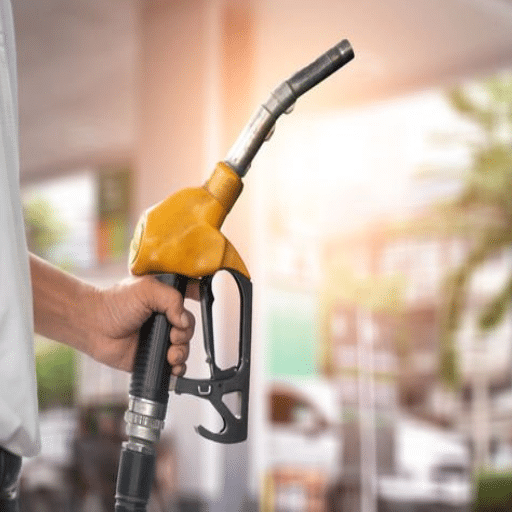
- Difficulty Starting the Engine – The gas engine could possibly have a hard time or not start at all due to water in the fuel, leading to improper mixing of fuel and air.
- Engine Misfires – One of the effects of water in the fuel is that it causes the engine to misfire or produce rough idling as a result of incomplete combustion.
- Reduced Power or Hesitation – You might notice your car is not very powerful, it feels lazy, or it sometimes stops for a moment; this is particularly noticeable during the acceleration period.
- Unusual Noises – As the water interferes with the normal combustion process in the engine, knocking or sputtering noises may be produced.
- Illuminated Check Engine Light – When the sensors identify inconsistencies, like improper combustion, the check engine light will be lit up.
Diagnostic testing should be done immediately if such symptoms occur, and draining the fuel system would be the most effective method to minimize further damage.
Signs Your Vehicle is Affected
Water getting into the fuel tank can lead to several problems that are easy to identify. The first symptoms that are often noticed indicate that it is time to take action quickly to avoid or minimize the engine damage that would otherwise occur in the long run. These are:
- Engine Hard to Start: Water mixed with the fuel causes the combustion process to be inefficient, thus the engine has to work harder, turning over, and this may lead to no starting at all. The reason behind this is that water is an inert substance that cannot be burned or compressed like gasoline.
- Misfire or Jerking During Acceleration: In this case, water alters the air-fuel mixture, which is necessary for the combustion to be smooth; thus, the car’s reaction during the acceleration can be felt as hesitation or jerking.
- Engine Misfires or Stalls: Irregular fuel ignition can be a result of a contaminated fuel system. This often leads to misfires, sputtering, or even random engine stalls during operation.
It is important to carry out a full diagnostic check as soon as possible. Draining the fuel tank, replacing the fuel filter, and cleaning the fuel system thoroughly are the most common treatments for restoring the engine performance to its optimal condition.
Performance Issues Related to Water in Fuel
Contamination of fuel with water can severely affect the working of engine and even cause mechanical breakdowns. Water in fuel can cause the following main problems:
- Starting the Engine is Difficult: Water interferes with the combustion of fuel, and the engines become slow to start, or the start completely fails. This is particularly true in winter, when water can freeze and prevent the delivery of fuel.
- Fuel Efficiency Decreases: Water mixed with fuel brings down the quality of fuel, and improper burning of fuel takes place, thus leading to a significant reduction in fuel efficiency as the engine has to work harder to keep the same power output.
- Fuel System’s Parts Corrode: Eventually, water in fuel causes rusting and corrosion of very important parts like fuel injectors, fuel pipes, and the pump. The increase in wear out leads to expensive repairs in case not solved timely manner.
- Engine Internals are Damaged: Water in the combustion chamber can cause detonations, which would harm the pistons and cylinder walls in the case of high-compression engines.
The good thing is that these problems can be resolved if we use fuel additives that are capable of removing water, carrying out regular checks, and maintenance of fuel system components, and also staying away from fueling at gas stations with dubious storage practices. In case of any doubt, a complete fuel system inspection and tank drain should be done by a certified mechanic to save the engine from long-term damage.
Visual Indicators of Water Contamination
The presence of water in fuel can be detected by noticing particular changes in the fuel’s physical and chemical properties. The cloudy or hazy look is a common visual sign of the presence of water, as water cannot be completely dissolved in gasoline or diesel, and this leads to separation. Moreover, the presence of water in the fuel can lead to the development of rust or the accumulation of sediment particles in the fuel as the tank gets moisture from the air. Another very clear sign of water in the fuel is the formation of water droplets or a distinct layer of water settling at the bottom of the tank or fuel container, which is often seen in transparent vessels. It is important to treat these signs as a signal for urgent inquiry and corrective actions to prevent the fuel system and engine from getting damaged.
Checking for Water in Your Fuel Tank
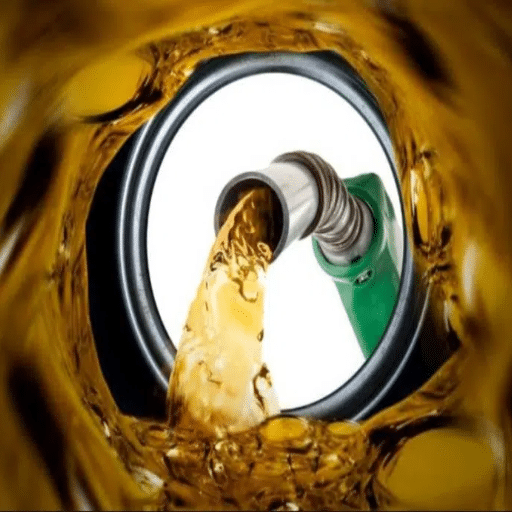
To determine whether or not there is water in your fuel tank, you should do the following:
- Inspect the Fuel: Take a sample of the fuel using a clear container. Water, being heavier than fuel, will settle down at the bottom of the container, thus showing its presence. So, examine the sample for separation or water droplets.
- Use Water Detection Paste: Take a dipstick, apply water detection paste, and insert it into the tank. Just a quick and reliable indication is done since the paste will change color when in contact with water.
- Monitor Engine Performance: Be observant of what might indicate water contamination, such as rough idling, difficulty starting, or reduced power output. These factors can point to water coming from the fuel system.
Remove the water immediately if found by draining the tank or employing a fuel additive made specifically for water elimination. Continuous monitoring and maintenance will guarantee that water-related problems will not occur in your fuel system.
How to Inspect Your Gas Tank for Water
To check whether there is any water in your gas tank or not, you must follow these instructions step by step for correct detection and appropriate treatment:
- Perform a Visual Inspection
Start by checking the fuel quality. If you can draw a little sample from the tank, then see if there is any separation, as water is heavier and will settle at the bottom of the jar. The very existence of two separate layers points to the contamination of the fuel with water. - Use Water-Detecting Paste
Take a dipstick or a probe and apply the water-detecting paste to it, and put it in the gas tank. The paste that is formulated just for this purpose will color itself when it comes in contact with water, thus making it an easy and right choice for diagnosis. - Monitor for Engine Irregularities
Watch for the symptoms of the engine is not functioning properly, for example, sputtering, rough idling, or hard starting. Water’s presence in the process of combustion with fuel is a reason for these difficulties. - Check for Error Codes or Sensor Alerts
Most of the new models of cars are equipped with sensors that can identify water in the fuel system, which may cause the check engine light or a specific error code to be generated. To find out if any diagnostics are relevant, use the OBD-II scanner.
The application of these examination procedures will ensure that water contamination in your gas tank is detected early on and the necessary steps are taken to avoid the leakage, thus, the engine will run smoothly and last longer.
Using Tools to Detect Water Contamination
The detection of water contamination in fuel systems needs to be very accurate and also to have the using of special tools. The following list gives some major tools that are widely used for identifying water in gas tanks:
| Tool | Description |
|---|---|
| Water-Finding Paste | Water-finding paste is a certain tool that is used on a dipstick or probe. The paste changes color as soon as it meets the water, which gives an easy way to know about the water being present at the base of the fuel tank. This tool works remarkably in huge tanks or storage systems. |
| Fuel-Water Separator | A lot of vehicles, particularly those running on diesel, have the facility of fuel-water separators. These gadgets safeguard the water that is mixed in the fuel, and some versions provide visual signals or even have a notification system that warns the driver when the water separation is at a level that is critical. |
| OBD-II Scanner for Sensor Data | Vehicles that are advanced have sensors that can identify alterations in the quality of the fuel. If you connect an OBD-II scanner, you can check the error codes or fuel-related cautions that might point to water contamination. This is a fast and easy way to spot problems without taking apart the fuel system. |
| Lab Testing of Fuel Samples | For the most precise results, a small amount of fuel can be taken and sent for chemical analysis to a laboratory. Lab-based tests can determine the amount of water and give a thorough report about the fuel quality, including problems that might be caused by other factors apart from water contamination. |
All these tools and methods together make it easy to detect and confirm water contamination and thus take quick actions to protect engine performance and integrity.
When to Seek Professional Help
Contamination of the fuel systems with water should be considered serious enough to require professional help if it leads to recurring engine performance problems or if the contamination level is very high and cannot be eliminated by standard methods. In case of symptoms like engine misfire, power drop, and frequent filter replacement, one should consult an expert. Also, scenarios where advanced testing like fuel composition analysis or system flushing, is required to bring the system back to its optimal functioning state call for an expert’s help. Through exclusive access to the right tools and knowledge, experts will make sure that the problem of fuel contamination is completely identified and solved so that the engine and fuel components are not damaged in the long run.
Removing Water from Your Gas Tank
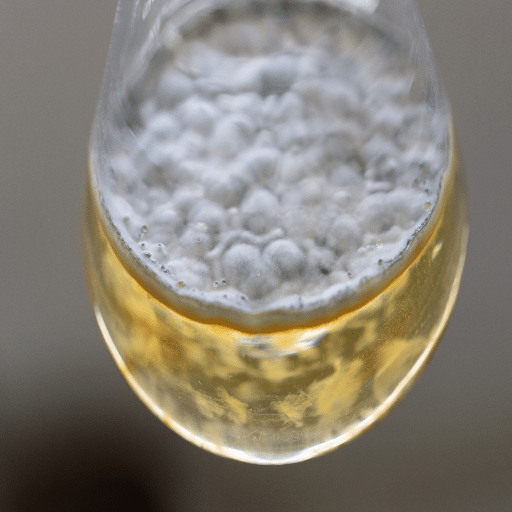
For the efficient removal of water from the gas tank, start by introducing a fuel additive that is specifically made for absorbing or removing water. Isopropanol or ethanol-containing products are widely used for this purpose as they attach to the water and allow it to blend with the fuel for burning. Always adhere to the manufacturer’s guidelines for the pharmaceuticals to be used in your tank size. If the degree of contamination is too high, it might be required to completely drain the gas tank and refill it with fresh fuel. Do not hesitate to get help from a professional if you are not familiar with the procedure, or if the presence of water continues to be a problem after the initial cleanup measures.
Methods to Remove Water in a Gas Tank
It is necessary to remove the water from a gas tank to keep the engine working properly and to prevent the engine from being damaged. The following are the methods that can be used to tackle this problem:
- Fuel Additives Usage: The use of specialized fuel additives, such as those based on isopropyl alcohol or methanol, is intended to absorb water and let it combine with the fuel for burning. The products that are often recommended for this purpose include HEET and ISO-HEET. Be careful to follow the manufacturer’s dosage instructions, as it is easy to go over the recommended limit.
- Fuel Tank Draining: In the case of heavy water contamination, the best and most reliable way is to completely drain the gas tank. This will be done by safely siphoning contaminated fuel out and disposing of it in accordance with local regulations. After drainage, the tank is then filled with fresh and high-quality fuel.
- Professional Help: When water contamination continues or draining the tank is too complicated or lack of equipment, by all means, get help from a certified automotive technician. Technicians can use methods like purging the fuel system to get rid of the water.
Prevention maintenance practices include ensuring the gas cap is tightly sealed and using good-quality fuel, which helps keep the gas tank free from water. If water contamination is treated in time, engine performance and life will be good.
DIY Techniques for Getting Water Out of Gas
Most people are able to remove water from their gas tank using methods and materials that are at hand. One of the most effective DIY techniques is the use of fuel additives, such as isopropyl alcohol-based fuel dryers or water removers. These products bind with water molecules, allowing them to combust safely within the engine. Follow the manufacturer’s instructions for proper application to avoid overuse, which could affect fuel quality.
Draining the gas tank completely is another method. This requires safely siphoning out the contaminated fuel into an appropriate container. Once it is emptied, it is essential to clean the tank if possible and refill it with fresh fuel. This will ensure that no residual water will harm the engine parts.
In mild cases, by adding high-octane fuel, there will be a dilution of the small water amounts and a reduction of the water influence on the engine performance. It is the higher ethanol content in certain gasoline types that can help absorb and remove water contamination to a minor degree.
Important Safety Notice: Caution is the rule during these processes. Be sure to always work in well-ventilated areas and follow the proper safety guidelines to prevent fire hazards or environmental harm. It is recommended to take professional help if water contamination persists even after these techniques have been applied.
Preventing Future Water Contamination
The prevention of water contamination in fuel systems is a matter of adopting proper practices for storage, handling, and maintenance. To begin with, the fuel must be stored in containers that are sealed, moisture-resistant and in cool, dry places to avoid condensation. Conduct regular inspections of the storage tanks for leaks or cracks that might let in water. Furthermore, do not keep vehicles or machines inactive with fuel tanks partially filled because this could lead to the formation of condensation inside. Usage of reliable fuel additives that deter water-related problems can also work.
During the refilling process, always guarantee that the fuel caps are tightly secured and observe for any visible moisture or water entry. In case of larger systems like marine fuel tanks or industrial applications, think about the use of water-separating filters or desiccant breathers, which can considerably cut down water ingress. Besides, periodic fuel testing and system maintenance are equally important, as they facilitate the timely detection of contaminants and the prevention of damage. The proactive measures outlined above will not only reduce water contamination risks but also secure the uninterrupted performance of the system.
What Happens if Water Gets in Your Gas Tank?

If your gas tank gets water, engine performance will be affected greatly, and there will be a lot of problems created. The water does not burn like gas and hence might give rise to sputtering, stalled cars, or hard starting of the vehicle. The rust and corrosion caused by water in the gas tank will eventually reach the fuel system parts like the electric pump and injectors, which might lead to expensive fixes if not taken care of. The best way to bring the engine back to life is to drain the tank and fill it with new fuel if there is a suspicion of contamination.
Effects on Engine Performance
Water in a car’s fuel system has a direct impact on the engine’s performance by preventing the proper burning of fuel. Water, being non-combustible, can result in faults, power loss, and unstable engine operations even in minor quantities. If the water amount is too much, the engine may stop running because the combustion chamber is not getting enough fuel. Also, as a result of this, the fuel system parts may get damaged, among which the pump and injectors may get corroded, thus, the system’s efficiency and life may be reduced. Timely detection and removal of water contamination is necessary to avoid long-term performance decay and expensive maintenance.
Long-term Damage to the Fuel System
Water contamination will for sure harm the fuel system if left unnoticed. The water in the system causes corrosion of the important parts like fuel pumps and injectors, hence leading to reduced efficiency and possible failures. Moreover, water being in the system for a long time will also increase the wear and tear on the internal parts, disrupt the fuel combustion, and finally cause expensive repairs or the replacement of the components. Preventative measures and immediate remediation are essential to avoid these long-term consequences.
Cost Implications of Ignoring Water in Fuel
Water contamination in fuel systems can no longer be ignored, as it leads to massive financial losses in the long run. Water presence acts as a catalyst for corrosion in critical components such as fuel tanks, lines, and injectors. Thus, system inefficiencies arise, and more and more systems get broken down. The costs of component repairs, including injector replacements, can be anywhere from $500 to $4,000, depending on the extent of the damage and the type of equipment. Besides, the issues caused by “diesel bug” and microbial growth also have a great impact on fuel quality. Ultimately, not only the fuel but also the lubricants being used need to be cleaned, a procedure that can cost anywhere from $1,000 to $6,000 depending on the method chosen for cleaning.
Water in fuel may cause more downtimes for businesses that use fuel as their primary resource, thus leading to possible loss of production or sales due to failures in equipment or a slowed-down workforce. However, when water in the system is not paid attention to for a long time, it may not only lead to the need for complete overhauls but also for the replacement of fuel tanks, which is a case that can cost tens of thousands of dollars. That’s why it is paramount to take measures that can help prevent incidents, such as conducting regular fuel testing, providing water separators, and practicing proper storage maintenance to minimize such huge operational costs.
| Repair/Service Type | Estimated Cost Range |
|---|---|
| Fuel Injector Replacement | $500 – $4,000 |
| Fuel System Cleaning | $1,000 – $6,000 |
| Complete Fuel Tank Replacement | $10,000+ |
Reference Sources
Frequently Asked Questions (FAQs)
Water in gas tank symptoms: What are the most common signs my car has water in the gas tank?
The most common symptoms of water in the gas tank are stalling, rough idling, misfires, weak power during acceleration, hard starting, and maybe even the check engine light turned on. You may also experience, when driving at a fast speed, either sputtering of the engine or loss of power instantly. The reason for this is that water is denser compared to gasoline, so it sinks to the bottom of the tank and goes along the fuel line, where the pump extracts water along with gas, which leads to these symptoms.
Water in the gas tank: How does water get into your gas tank in the first place?
Water can indeed enter your gas tank by condensation formed inside the tank, by fueling with contaminated gas at a gas station, by a damaged or loose gas cap, or by floodwaters. Good gas stations minimize this risk, but even a tiny bit of water from the fuel can come in during the refueling process. Besides, road spray, cracked fuel lines, and poor seals can also make it possible for water to seep into the fuel tank.
Remove water in gas tank: What are the best ways to remove water from the fuel tank?
Water removal in the fuel tank can be achieved by either draining the tank, utilizing a siphon to remove the water from the bottom of the tank, or using a special fuel additive that emulsifies the water, which then passes through the system and is incinerated. Tanks that contain smaller quantities of water can be drained and cleaned by professionals as a safe option. Some types of fuel filters trap water; however, they might not eliminate all the water that exists in the tank.
Preventing water from getting in: How can I prevent water from getting into my car’s gas tank?
Preventive measures for keeping water from entering the tank include making sure the tank is full in cold or damp areas to minimize condensation, going to a reputable gas station, replacing frayed caps and seals, and parking the vehicle in dry places. It is also helpful to use fuel additives that soak up very little water, and regular inspection of the fuel line and tank will make it less likely for water to get into the system.
Get water in your gas: Can a small amount of water in gasoline cause problems?
Definitely! Even the slightest amount of water in gas can trigger symptoms like sputtering and rough idling since water does not burn. It might be that half an ounce of water mixed in fuel is not a severe scenario, but the little ones can result in corrosion, blockage in the fuel line, and long-term damage to the injectors or the fuel pump. Large quantities of water will sink to the bottom of the tank and cause more severe engine problems.
Much water: What happens if a lot of water is in the tank?
If too much water gets into the tank, the car might not start or will stall often. Water in the tank is likely to wreak havoc through engine misfires, corrosion of internal parts, and damage to the fuel pump and injectors. In worst cases, the water plus contaminated gas have to be removed, the tank and fuel system thoroughly cleaned to prevent follow-up damage.
Avoid water contamination: Are fuel additives helpful to avoid water contamination?
Using a fuel additive can be of assistance in removing water from the gas tank if the amount of contamination is small, as the water will be emulsified so it can pass through the system and be burned. However, if the water is in large quantities, the additives are not that effective, and they can’t be a replacement for draining the tank when there is too much water. It is best to choose a reputable additive scientifically formulated to remove water from the fuel and to follow the directives accurately.
Get into your gas tank: How do I check and fix water entering my car’s tank and fuel system?
You can check for the presence of water in your car’s gas by taking a see-through container and siphoning a little bit out of the fuel tank—water will form a separate layer at the bottom. Smell the gas to see if there are any strange odors that may indicate bad transmission fluid or contamination. Should you come across water, remove it by draining the tank, changing the fuel filter, and flushing the fuel lines. In case of heavy contamination, have a technician check the fuel pump and injectors as well as do professional cleansing of the tank and fuel system to eliminate the water and avert future problems.


